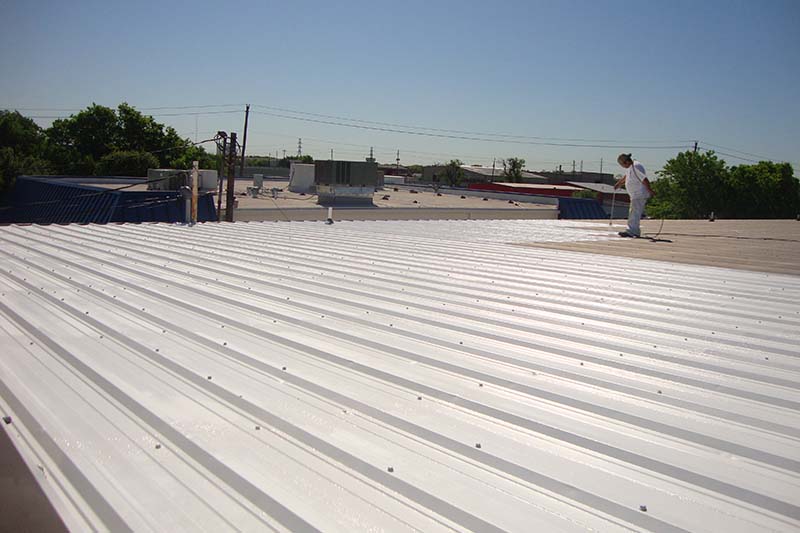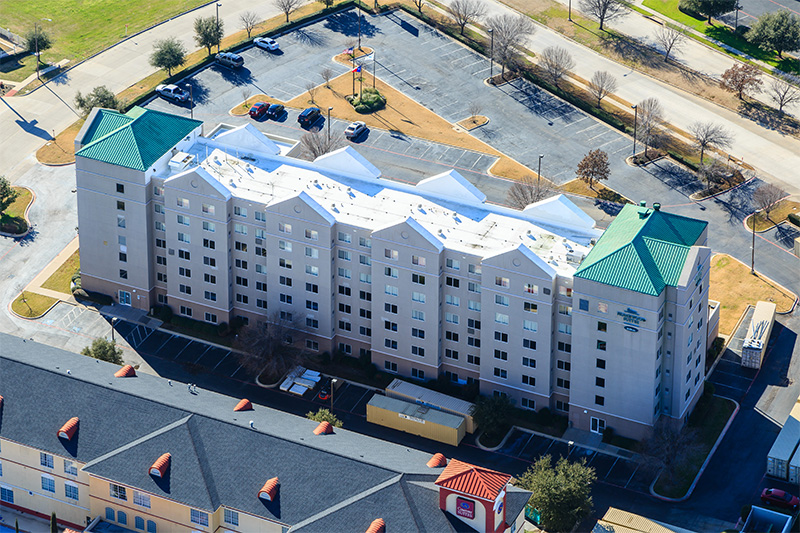Restorations and Coatings
About Roof Restorations:
Roof restorations can be a viable alternative to full replacements in many circumstances. Prior to considering a restoration the first step is to determine whether a restoration is a practical alternative to a full replacement. Typically the first step is to perform a core analysis in which a circular hole is cut into the roof to determine roof thickness, deck type, and to look for any moistures accumulation within the roof.
In many cases roofs will have two layers. Most cities and municipalities will not allow a roof to exceed two layers in thickness, so when this occurs a roof restoration can make much more economic sense by providing the owner with significant cost savings.
Typically roof restorations cost approximately half as much as a full replacement. In addition, there can be significant tax savings. As with all capital expenses the government requires roof replacements be depreciated over a 39 year period. A roof restoration is treated as maintenance and may be depreciated the first year. This alone is usually a compelling factor in helping a building owner make a decision from a financial perspective.
Is Restoration the Right Choice?
The following questions need to be answered or addressed:
- Does your roof have adequate slope?
- How extensive are the current leaks?
- Has the condition of the underlying insulation and deck been examined through core analysis?
- If moisture has been found through the core analysis the use of an infrared scan may be necessary to determine how extensive the moisture is.
- How many layers of roofs are there?
- What are your city, or municipalities building code requirements?
Determining the Correct Restoration Choice:
There are a myriad of restoration options available today, and a wide range of technologies. These products include: Acrylic, asphalt, coal-tar, solvent-based, silicone, and emulsion. There are also hybrid products that combine two or more of these chemistries. Each product type is generally used for a different roofing system. Choosing the right product for the correct system requires the skill of a competent contractor. There are many factors to consider when determining the correct product. These include, but are not limited to:
- Roofing type (Single Ply, BUR, Metal, Modified)
- Surface type, Ie. Metal, mineral, gravel, smooth
- Type of facility – What is the facility used for, and how long will it be in use
Benefits of Restorations:
- Tax credits and energy rebates – Depending upon geographic locale there are programs that may provide you with government rebates.
- Substantial cost savings – Half the price of traditional roof replacements.
- Increased SRI (Solar Reflective Index) – This will help to reduce energy usage due to the reflective properties .
- Potential Insurance Savings – Depending upon the system, a restoration may upgrade your roof to a class A fire rating, and in turn reduce energy costs.
- Environmentally Friendly – Restorations do not require the roof be torn off which results in increased landfill waste.


